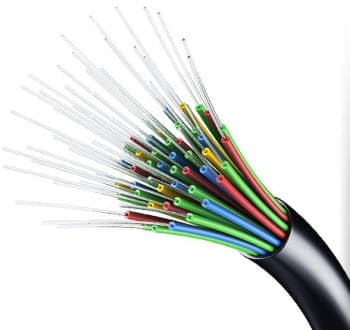PODCAST: explore findings on SciAt while researching neuroscience practitioners.

Scientific Atlanta was a U.S. company known for manufacturing equipment for cable television, telecommunications, and broadband. It was acquired by Cisco Systems in 2005. Prior to the acquisition, it was a Fortune 500 company and a leader in the development of digital cable technology. [1, 2, 3]
Here’s a more detailed look:
- Founding and Early Years: Founded in 1951 by a group of Georgia Tech engineers, Scientific Atlanta initially focused on satellite communications equipment. [1, 2]
- Growth and Expansion: The company saw significant growth in the 1970s, particularly within the cable television market. [2]
- Restructuring and Innovation: In the 1980s, Scientific Atlanta restructured its business operations and later invested heavily in digital cable technology in the 1990s, including video-on-demand capabilities. [2, 3]
- Cisco Acquisition: Cisco Systems acquired Scientific Atlanta in 2005 for $6.9 billion, marking one of the largest technology acquisitions in history, according to Wikipedia. [1]
- Post-Acquisition: Scientific Atlanta became a wholly owned subsidiary of Cisco, continuing to operate as a provider of digital content contribution and distribution systems, broadband access solutions, and subscriber systems. [1, 4]
[1] https://en.wikipedia.org/wiki/Scientific_Atlanta
[2] https://sky-brokers.com/supplier/scientific-atlanta/
[3] https://www.tuff.org/how-atlanta-shaped-tech-history/
Hybrid Fiber-Coax (HFC) is a broadband network technology that combines optical fiber and coaxial cable to deliver internet, television, and telephone services. It uses fiber optic cables for high-speed, long-distance data transmission to a local node, and then utilizes coaxial cables to connect individual homes and businesses to that node. [1, 2, 3]
Key aspects of HFC:
- Fiber for Speed and Distance: Fiber optic cables are used for the “trunk” or backbone of the network, carrying data over long distances with high speed and minimal signal loss. [1, 1, 2, 2]
- Coax for the Last Mile: Coaxial cables, which are more cost-effective for shorter distances, handle the final connection from the node to individual customer premises. [1, 1, 2, 4, 5]
- Cost-Effective: HFC is a cost-effective way to deliver broadband services because it leverages existing coaxial infrastructure while incorporating fiber for improved performance. [1, 1, 3, 3, 6, 6]
- Scalability: HFC networks can be upgraded to accommodate increasing bandwidth demands by adjusting the technology used at the fiber node and within the coaxial network. [1, 1, 6, 6]
- Popularity: HFC has been widely adopted by cable television operators and is a common method for delivering broadband services. [6, 6, 7, 7]
- Examples: In Australia, the NBN (National Broadband Network) uses HFC technology in many areas. Some internet providers, like Optimum, also use HFC for their internet service. [3, 3, 8, 8]
How it works:
- Headend: The headend is where the internet, television, and telephone signals originate. [3, 3, 9, 9, 10]
- Fiber Optic Cable: Signals are transmitted from the headend to a local node (often in a neighborhood) via fiber optic cables. [2, 2, 3, 3]
- Coaxial Cable: At the node, the signal is distributed to individual homes and businesses via coaxial cables. [2, 2, 3, 3]
- Modem/Router: A modem or router connects to the coaxial cable within the home to provide internet access. [3, 3]
[1] https://www.youtube.com/watch?v=AoHhUhJPG2c
[2] https://www.precisionot.com/what-is-fttx-or-hfc/
[3] https://m.youtube.com/watch?v=IVNGTdjSHeQ&pp=ygUGI25ibmNt
[4] https://www.computer.org/csdl/proceedings-article/mwp/2006/04153824/12OmNBEpnAh
[5] https://www.compareinternet.com/blog/what-is-hybrid-fiber-coaxial-hfc/
[6] https://www.ppc-online.com/blog/what-are-hfc-networks
[7] https://en.wikipedia.org/wiki/Hybrid_fiber-coaxial
[8] https://www.optimum.com/articles/internet/optimum-wifi-6e-embrace-future-wifi
[9] https://www.spiedigitallibrary.org/proceedings/Download?urlId=10.1117/12.227288
[10] https://www.sciencedirect.com/topics/engineering/coaxial-network

Based on the sources, the concept of “smell sensing” is mentioned in the context of a company called **Osmo**.
Here’s what the sources say about it:
* **Osmo** is a company that launched in 2023 and focuses on **digitizing scent**.
* Osmo utilizes **AI, machine learning, olfactory neuroscience, and sensor technology** in its work.
* There is a connection between Osmo and a **former Scientific Atlanta executive, Brian Boso**. Boso, who previously served as VP of R&D at Scientific Atlanta, is listed as a member of Osmo’s Scientific Advisory Board (SAB).
* However, this link is **a post-employment activity of an individual** rather than an institutional connection of Scientific Atlanta itself. Boso’s career progressed through other companies (Tektronix, Smiths Detection) *after* leaving Scientific Atlanta and before joining Osmo’s SAB. His involvement with Osmo likely draws upon the totality of his extensive technology leadership experience, especially his more recent roles involving advanced sensing technologies.
* The analysis concludes that this connection **does not imply any institutional collaboration, technology transfer, or strategic direction undertaken by Scientific Atlanta in the neuroscience field**. It is the closest, yet still indirect and temporally distant, link found between Scientific Atlanta and neuroscience in the reviewed materials.
The sources consistently emphasize that Scientific Atlanta’s core focus and technological impact remained within the **telecommunications and media technology sectors**, from antenna design to satellite and cable television equipment. There is no evidence that Scientific Atlanta directly engaged with the field of neuroscience or developed products for smell sensing or related applications.
I found several intriguing articles on electroantennography related to insect antenna-based biosensors. Electronic Nose (E-nose) Technologies.
https://www.frontiersin.org/journals/sensors/articles/10.3389/fsens.2023.1170280/full?form=MG0AV3&form=MG0AV3
https://www.uc.edu/content/dam/refresh/cont-ed-62/olli/new-tech-sept22.pdf?form=MG0AV3&form=MG0AV3
https://www.mdpi.com/1424-8220/24/15/4806?form=MG0AV3&form=MG0AV3
Various webpages about surface acoustic wave olfactory sensors and artificial olfactory sensor technologies are available
https://biomaterialsres.biomedcentral.com/articles/10.1186/s40824-022-00287-1?form=MG0AV3&form=MG0AV3
https://www.igi-global.com/chapter/odor-sensing-using-spherical-surface/71926?form=MG0AV3&form=MG0AV3
https://www.tandfonline.com/doi/pdf/10.3155/1047-3289.58.12.1522?form=MG0AV3&form=MG0AV3
I have found multiple interesting webpages discussing MEMS sensors and their applications in smell sensing.
https://www.nature.com/articles/s41378-024-00752-y.pdf?form=MG0AV3&form=MG0AV3
https://www.hackster.io/DFRobotOfficial/building-an-electronic-nose-with-mems-gas-detection-sensor-de5269?form=MG0AV3&form=MG0AV3
https://www.mdpi.com/1424-8220/25/5/1480?form=MG0AV3&form=MG0AV3
AI and Machine Learning for Smell Mapping
Several pages discuss AI advancements in digitizing smell through Principal Odor Mapping, which is relevant to the research area.
https://www.osmo.ai/blog/science-paper-shows-osmo-ai-passes-the-sniff-test?form=MG0AV3&form=MG0AV3
https://research.google/blog/digitizing-smell-using-molecular-maps-to-understand-odor/?form=MG0AV3&form=MG0AV3
https://spectrum.ieee.org/digital-smell?form=MG0AV3&form=MG0AV3
GC-MS and Headspace Analysis for Scent Digitization
https://www.innovatechlabs.com/newsroom/1145/unraveling-scent-perfume-makers-gcms-analysis/?form=MG0AV3&form=MG0AV3
https://www.agilent.com/en/product/gas-chromatography/gc-sample-preparation-introduction/what-is-headspace?form=MG0AV3&form=MG0AV3
https://www.bgb-info.com/files/master/CTC/Static_and_Dynamic_Headspace_Analysis-The_PAL_Compendium.pdf?form=MG0AV3&form=MG0AV3
The research has provided substantial insights into Osmo’s scent teleportation platform, yet there are multiple detailed and reputable sources available to explore more.
https://www.osmo.ai/blog/update-scent-teleportation-we-did-it?form=MG0AV3&form=MG0AV3
https://www.uniladtech.com/science/news/smell-teleportation-discovered-scientists-breakthrough-695640-20241104?form=MG0AV3&form=MG0AV3
https://www.davidborish.com/post/smell-through-the-internet-inside-osmo-s-scent-teleportation-breakthrough?form=MG0AV3&form=MG0AV3
Environmental Monitoring Applications, Multiple webpages provide insights into olfactory biosensors for environmental monitoring.
https://pubs.rsc.org/en/content/articlehtml/2022/sd/d2sd00112h?form=MG0AV3&form=MG0AV3
https://www.mdpi.com/2079-9292/14/9/1852?form=MG0AV3&form=MG0AV3
I found multiple relevant resources on synthetic biology and neuromorphic olfactory systems, including promising studies.
https://arxiv.org/html/2504.10053v1?form=MG0AV3&form=MG0AV3
https://neuromorphiccore.ai/mimicking-the-nose-biology-meets-neuromorphic-design/?form=MG0AV3&form=MG0AV3
https://www.nature.com/articles/nchembio.2315.pdf?form=MG0AV3&form=MG0AV3